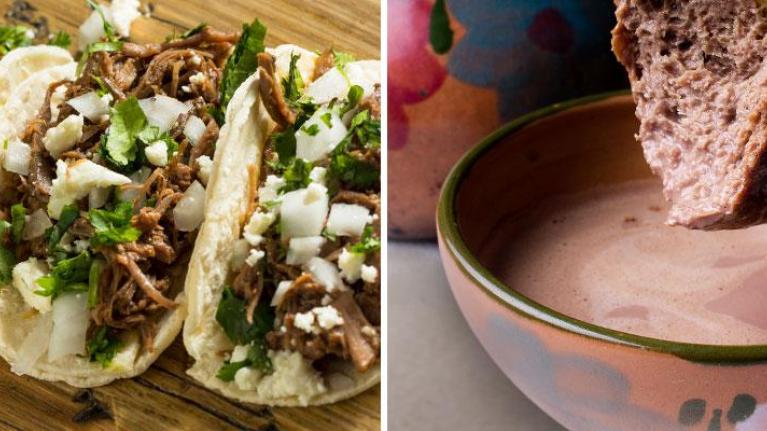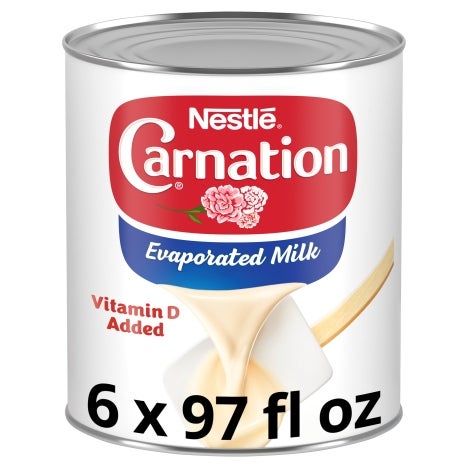
Mexican Specialties Deserve Menu Space
Regional Mexican dishes are all the buzz. Find out what fits with your menu and dial up customer excitement.
Tacos, burritos, guacamole, and cerveza will always have a place on menus, but the most exciting Mexican influences today delve deep into the tremendous diversity of regional Mexican cuisine. According to Datassential, trendsetting food service and retail concepts are buzzing with specialty items like carnitas and carne asada, tortas and cemitas, ceviche, barbacoa, empanadas, churros, mole, tamales, chilaquiles, horchata, and Mexican hot chocolate. These items are not just restricted to ethnic outlets, either—they’re rapidly gaining mainstream status.
South of the Border Beverages
Mexican Hot Chocolate—Rich and warming, the Mexican version of cocoa is spiced with cinnamon and can also be enlivened with cayenne or chili powder.
Horchata—Sweet, milky, and flavored with cinnamon, this appealing drink is usually made with rice, but versions incorporating almonds, melon seeds, and coconut milk can also be found. The flavor profile also works for milkshakes, cocktail specialties, and food items like ice cream and French toast.
Next-Level Signatures
Barbacoa—The Latin equivalent of barbecue involves cooking large pieces of seasoned meat (often beef or lamb) very slowly over an open fire; it can also be steamed until tender. Traditionally, the meat is then shredded and served on warm corn tortillas with salsa for added flavor, and often accompanied by diced onions, chopped cilantro, and a squeeze of lime juice. But barbacoa also can be used as a filling or topping for all kinds of other products, from traditional Mexican sandwiches and nachos to cross-cultural baked potatoes, rice bowls, and even salads.
Carne Asada—Literally “grilled meat,” this versatile protein consists of steak (such as flank or tenderloin) which can be marinated or seasoned with anything from a simple dry rub to a complex, spiced marinade, then seared and served in other dishes, including burritos, tacos, gorditas, quesadillas, and more.
Carnitas—These “little meats” from the state of Michoacán are made by braising or simmering pork in oil or lard for three to four hours, resulting in meat that is very tender and juicy. Carnitas are typically served with chopped coriander leaves (cilantro) and diced onion, salsa, guacamole, tortillas, and refried beans, but as with barbacoa and carne asada they can also be incorporated into other recipes.
Ceviche—Popular throughout the Pacific coastal regions of Latin America, ceviche is typically made from fresh raw fish or shellfish cured in citrus juices, such as lemon or lime, and spiced with chili peppers. Additional seasonings, such as chopped onions, salt, and cilantro, may also be added. In Mexico, ceviche is often served in a cup with crisp tortilla chips, but it is also delicious with corn nuts, plantain, or sweet potato chips. The method can also be used with cooked shrimp, crab, or lobster.
Mole—A range of complex sauces as well as a dish made from any one of these sauces, moles come in various flavors and ingredients, with chili peppers as the common factor. The most well-known is mole poblano, which is a dark red or brown sauce served over meat, but other moles can be black (this one famously includes chocolate as well as spices like cinnamon and cloves); yellow (with yellow chilis and the herb hoja santa); green (from pipian pumpkin seeds); and more.
Handheld Inspirations
Empanadas—A favorite throughout Latin America, the empanada is a savory fried or baked turnover whose fillings are only restricted by imagination, but popular ones include picadillo (ground meat and olives), chorizo and cheese, mushrooms, stewed chicken, pulled pork, and plantains. There are also sweet versions filled with various fruits and spices.
Tortas and Cemitas—These two Mexican sandwich forms are some of the easiest translations to make. As with most sandwiches, it all depends on the bread. For the torta, the oblong, crusty white roll is also called a bolillo, telera, or birote, and the sandwich itself can be served cold or pressed on a griddle like a Cuban. The cemita, a sandwich originally from Puebla, is typically served on a round bun covered with sesame seeds. Fillings for either range from ham to avocado to scrambled eggs; another popular variety, the Milanesa, is stuffed with fried, breaded veal or chicken.
Breakfast Specialties
Chilaquiles—Traditionally made with fried tortilla strips softened in salsa, chilaquiles can optionally be used as a poaching medium for eggs (or topped with fried eggs), and are garnished with ingredients like cilantro, onions, crema, and queso fresco.
Migas—Like chilaquiles, this hearty Mexican breakfast dish was originally created as a use for day-old tortillas—usually pan-fried corn tortillas mixed with scrambled eggs and various vegetables, salsas, meats, and beans.
Sweet Endings
Churros—Cruller-like strips of crisp fried dough are a favorite street-corner snack in Mexico, and they can be served with all kinds of sweet toppings and dips, including chocolate, fruit sauce, and whipped cream—as well as hot chocolate for dunking.
Sopapillas—Made from an easy quick-bread dough, these doughnut-like fried pastries are often served sprinkled with cinnamon sugar or with warm honey for drizzling, but they are easily elevated with sweet fillings, toppings, and other finishes.
Tres Leches—Literally “three milks,” traditional tres leches is a sponge or butter cake soaked in evaporated milk, condensed milk, and heavy cream. But the flavor profile also works for other sweets, such as ice cream.
Sources: Datassential Menu Adoption Cycle, Mexican Cuisine (Sept. 2016); Datassential SNAP: Mexican (2018)
The information provided is based on a general industry overview, and is not specific to your business operation. Each business is unique and decisions related to your business should be made after consultation with appropriate experts.
Nestlé Professional offers an array of Latin products that provide an easy entry point for Mexican flavors and specialties, from cheese sauce to chile-spiked flavor concentrates to beverages like Nestlé®Abuelita® Authentic Mexican Style Hot Chocolate Mix
Mexican food is found on 23% of all menus, up 10% since 2014.
Source: Datassential SNAP: Mexican (2018)






